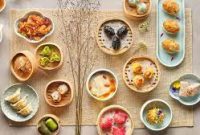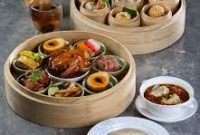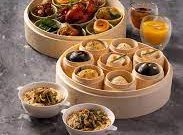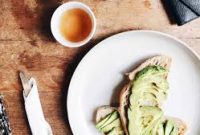The Art of Chinese Tea and Food Pairing: Elevating Your Dining Experience
Elevating Your Dining Experience

Chinese tea matching is a centuries-old art form that goes beyond the typical dining experience and is at the core of Chinese culinary culture. This refined and subtle method elevates the eating experience to a realm of sensory enjoyment while celebrating tastes and exploring smells. We’ll reveal the techniques of Chinese tea and food matching in this investigation, providing you with a roadmap to improve your culinary travels.
The Harmony of Chinese Tea:
Chinese tea is an essential component of the nation’s rich cultural legacy, not just an alcoholic beverage. Chinese tea has a broad range of tastes and fragrances, making it ideal for combining with a variety of foods. Chinese teas come in a wide variety that may enhance your dining experience, from the mild undertones of green tea to the strong earthiness of Pu-erh.
Types of Chinese Tea:
To begin learning the art of matching, one must first comprehend the many varieties of Chinese tea:
- Green Tea: Green teas like Dragon Well or Longjing, which are noted for their grassy and fresh tones, combine well with salads, shellfish, and lighter fare. Its sharpness offers a welcome change of pace.
- Oolong Tea: Oolong teas like Tie Guan Yin have a varied taste character due to their differing levels of oxidation. They are ideal for dim sum or mildly seasoned meats since they are adaptable and go well with both delicate and heartier meals.
- Black Tea: Black teas like Keemun or lapsang souchong, which are robust and frequently malty, pair nicely with stronger tastes. They may improve the flavor of hot foods, sweets, and even grilled meats.
- Pu-erh Tea: Pu-erh teas, such as Shu Pu-erh, are fermented and aged, and they have earthy, woodsy, and even smokey flavors. Rich, delicious foods go well with them since they provide a refreshing contrast.


Principles of Chinese Tea and Food Pairing:
Gaining a thorough understanding of the guiding principles of matching requires mastery of this culinary technique:
- Flavor Harmony: Align the food’s and the tea’s flavor characteristics. For instance, the delicate aromas of steamed fish or dumplings might be enhanced by the flowery overtones of Tie Guan Yin oolong.
- Texture Contrast: Think about the food’s texture and the tea’s. Crispier, lighter teas are a pleasant palette cleanser when paired with creamy or fatty foods.
- Aromatic Complement: Take note of the food’s and the tea’s fragrant properties. Lapsang souchong’s smokiness may bring out the tastes of grilled or smoked foods.
Classic Chinese Tea and Food Pairings:
Let’s examine some traditional combinations that highlight the richness and adaptability of Chinese tea when combined with other delectable foods:
- Longjing Green Tea with Dim Sum:
- Slightly sweet and with a chestnut scent, Longjing green tea enhances the flavor of dim sum’s array of ingredients, especially the delicate dumplings, steamed buns, and spring rolls.
- Tie Guan Yin Oolong with Seafood:
- Tie Guan Yin is a great match for meals like steamed fish, prawns, or scallops because of its flowery and somewhat fruity overtones that go well with the fresh tastes of seafood.
- Lapsang Souchong Black Tea with Barbecue:
- Lapsang souchong’s strong and smokey taste complements the strong flavors of barbecue meals, resulting in a well-balanced dish that elevates the entire dining experience.
- Pu-erh Tea with Rich Meat Dishes:
- With its earthy, nuanced flavor, pu-erh balances rich, fatty meats like braised pig belly or Peking duck, leaving the palette feeling refreshed in between mouthful.
Crafting Your Own Pairings:
Though traditional pairings are a great place to start, the real fun is in coming up with your own original combinations. The following advice can help you create your own pairings:
- Experiment Liberally: Try experimenting with new drinks and foods without fear. Chinese tea comes in a wide variety, offering countless opportunities for interesting combinations.
- Consider Intensity: Align the tea’s strength with the food’s tastes. Strongly flavored or highly spicy foods can overpower light teas, yet powerful teas can go well with them.


Conclusion:
To sum up, the practise of matching Chinese tea with food is a sophisticated ballet of tastes, a symphony of fragrances, and a celebration of diversity in culture. Allow the rich and varied world of Chinese tea to lead your taste as you set out on this culinary adventure; every bite and sip will elevate the overall eating experience. The combination of Chinese tea and cuisine is a joyful journey that turns the ordinary into the spectacular, whether you follow the traditional pairings or make your own.



